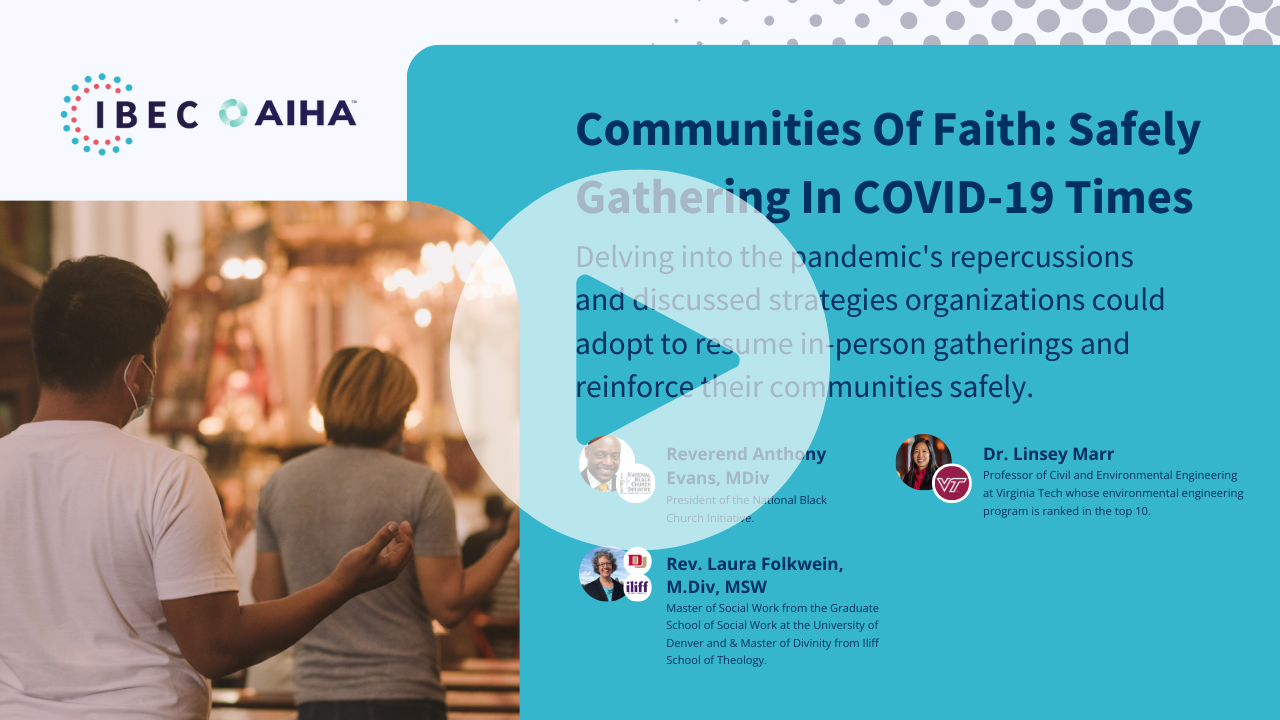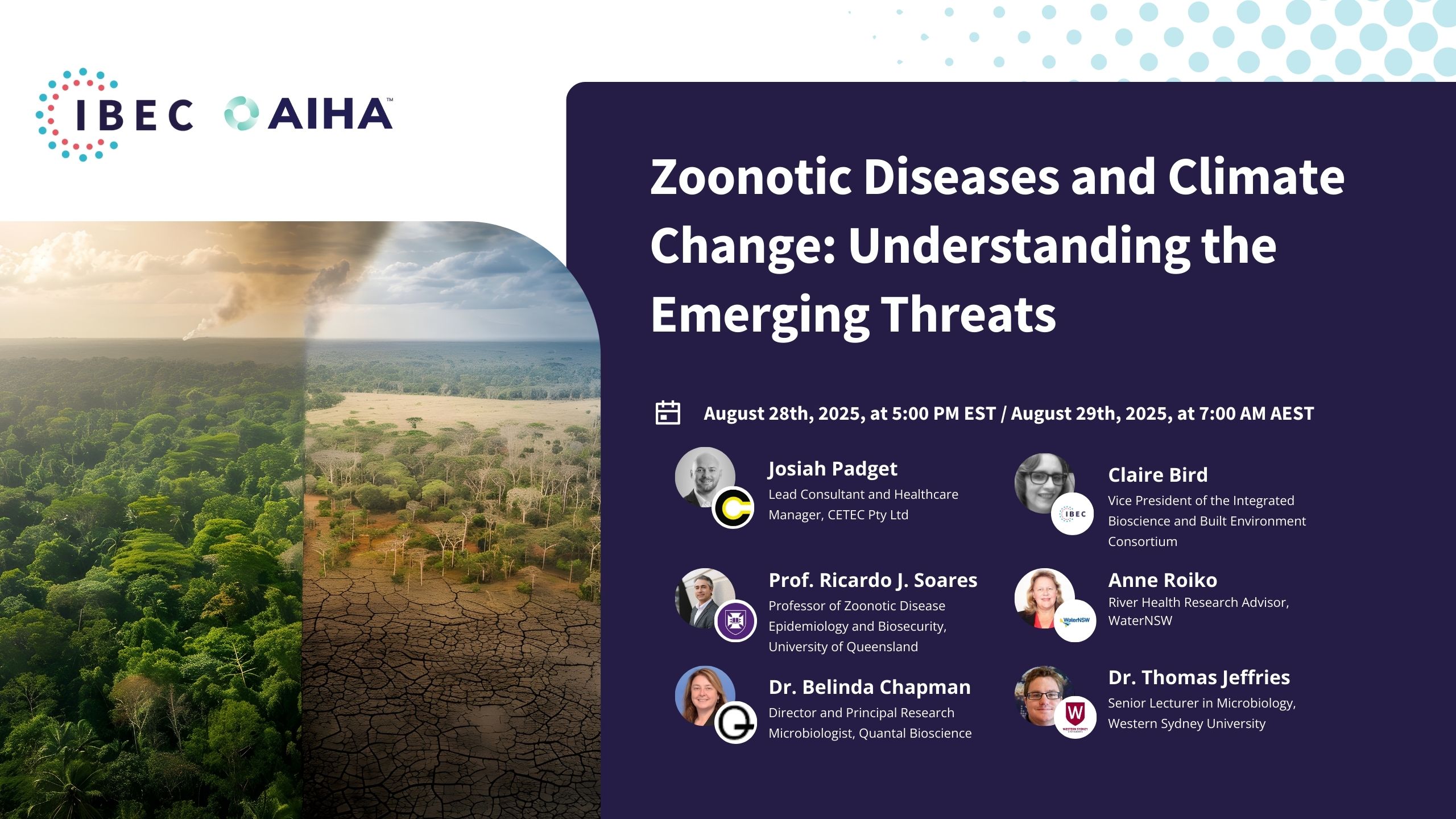Watch this session to get expert guidance on the impacts of the pandemic and what organizations can do to restart in-person gatherings to rebuild and strengthen their communities.
CLEAN Lessons Learned
Communities Of Faith: Safely Gathering In COVID-19 Times
In the US, faith-based communities and organizations were significantly impacted by COVID-19. Establishing secure environments for worship, learning, playing, and bonding became paramount in this new reality. Last December, the Lessons Learned series was held, focusing on these faith-based communities.
The session convened a diverse panel, including a community pastor, the head of a major faith-based organization, a senior environmental health specialist, and a scientist who offered expert advice to her congregation. They delved into the pandemic’s repercussions and discussed strategies organizations could adopt to resume in-person gatherings and reinforce their communities safely.
- The Practical is Prophetic: Emphasis on the intersection of actionable measures with their moral and spiritual implications.
- Disproportionate Impact: COVID-19 has taken a greater toll on certain communities, highlighting an urgent social and economic justice issue.
- Moral Imperative: Addressing the pandemic is not just about health but also about moral responsibility and community care.
- Resource Utilization: Churches and clergy are encouraged to contact and collaborate with local health departments for guidance.
- Community Collaboration: The importance of unity, understanding, and crossing previously challenging boundaries was emphasized.
- Panel’s Unified Message: The significance of collective efforts, understanding varied experiences, and cohesive action was recurrent throughout the discussion.
- Religious Freedom & Health Advice: There’s a balance to strike between religious freedom and health recommendations. Clergy can have productive dialogues with health departments to align on the best course of action.
- Caring for One Another: In these challenging times, the primary focus should be on the well-being of the community and mutual care.
- Challenging Cross-Collaboration: Collaborating across different lines, even those that might be historically challenging or outside the typical purview of faith communities, is vital.
- The Power of Local Health Resources: Even small communities can benefit greatly by reaching out to local health departments, highlighting the significance of local resources in combating the pandemic.
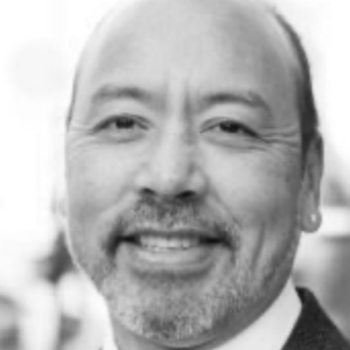
Kenneth Martinez
IBEC’s Chief Science Officer and Board founding member
Ken is an Environmental Engineer and Industrial Hygienist with experience in leading and conducting large-scale research, managing programs in occupational safety and health and emergency response; and creating and teaching professional development courses. He has over 33 years of CDC expertise in hazardous agent exposure characterization and mitigation control practices in the manufacturing and healthcare industry. Since retiring from the CDC, he served eight years in the CBRN space as a consultant focusing on a national biodetection program. Mr. Martinez is a recognized subject matter expert in biological agents, including infectious disease and bioterrorism agents.
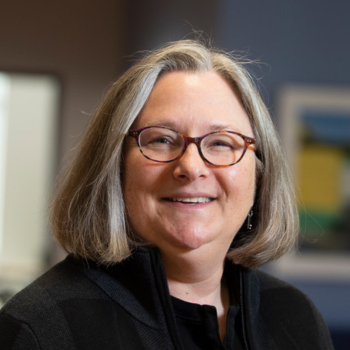
Dr. Monica Schoch-Spana
Medical anthropologist & Senior Scholar with the Johns Hopkins Center for Health Security
Dr. Monica Schoch-Spana, a medical anthropologist, is Senior Scholar with the Johns Hopkins Center for Health Security and Senior Scientist with the Department of Environmental Health and Engineering at the Johns Hopkins University Bloomberg School of Public Health.
For over 20 years, she has conducted research on public health emergency management, focusing on community resilience, behaviorally realistic emergency plans, public engagement in disaster planning, post-epidemic recovery, and crisis and emergency risk communication.
She has also worked diligently to translate scholarly research into actionable recommendations for policymakers and practitioners, including most recently as co-Principal Investigator for CommuniVax – a national ethnographic research coalition whose expert advisory group and 6 local teams are partnering with communities of color to tackle COVID-19 vaccine access and acceptance issues and to put equity at the center of the pandemic recovery process.
National advisory roles include the Homeland Security Subcommittee of the Board of Scientific Counselors for the US Environmental Protection Agency and the Resilient America Roundtable of the National Academies of Sciences, Engineering and Medicine, which she formerly co-chaired.
From 2003-2017, Dr. Schoch-Spana worked at the UPMC Center for Health Security; prior to that, at the Johns Hopkins University Center for Civilian Biodefense Strategies, starting in 1998. She received her Ph.D. in cultural anthropology from Johns Hopkins University
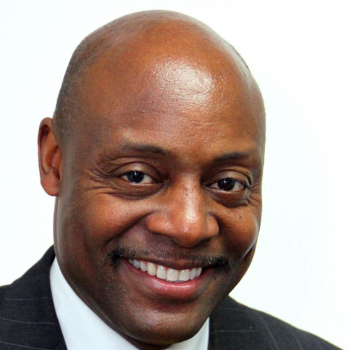
Reverend Anthony Evans, MDiv
President of the National Black Church Initiative.
Reverend Anthony Evans, MDiv is the President of the National Black Church Initiative. He has spent the duration of his life-fighting health disparities, foreclosure, homelessness, and intra-racial violence in the African American Community, in addition to promoting financial literacy and helping preserve environmental justice across the United States.
Reverend Evans became President of the National Black Church Initiative (NBCI) in 1992, and for the past twenty-five years, he has devoted his expertise to leading the organization, working tirelessly on social and economic justice issues facing the black faith community.
Under Reverend Evans’ leadership, NBCI has brought together a coalition of 34,000 churches from across the country, including over 15.7 million African Americans who join together to fight against health disparities, promote financial literacy, protect babies from abuse and neglect, and help preserve the environment.
Reverend Evans remains a tireless advocate of the African American community and is determined to preserve the moral authority of the black church’s voice.
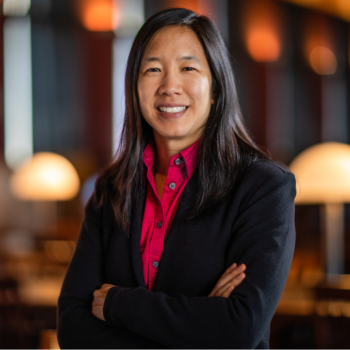
Dr. Linsey Marr
Professor of Civil and Environmental Engineering at Virginia Tech whose environmental engineering program is ranked in the top 10.
Her experience includes managing scientific research, teaching graduate and undergraduate courses, advising MS and Ph.D. dissertation research, publishing in the scientific peer-reviewed literature, giving technical presentations, obtaining grants for research, reviewing research proposals and papers for scientific journals, and serving on a Board and committees for the National Academies of Sciences, Engineering, and Medicine.
Dr Marr has over 20 years of experience in research on atmospheric chemistry and transport, air quality engineering, and bioaerosols, including laboratory, field, and modeling experiments.
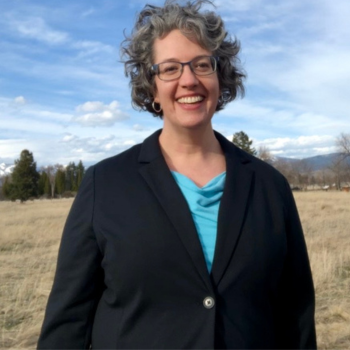
Rev. Laura Folkwein, M.Div, MSW
Master of Social Work from the Graduate School of Social Work at the University of Denver and & Master of Divinity from Iliff School of Theology.
She currently serves as the Designated Pastor at Pilgrim Congregational United Church of Christ in Bozeman, Montana. Rev. Folkwein grew up in Montana, as a United Methodist preacher’s kid and was ordained as a UCC pastor in Sahuarita, Arizona in 2014.
She has worked with communities and groups in faith-based and nonprofit settings in Montana, Washington, D.C.; Denver, Colorado; and Tucson, Arizona. She is passionate about strengthening communities, treating all people with dignity and respect, and connecting people to care for and advocate with each other.
Folkwein’s work has included serving undocumented immigrants, homeless Veterans, and a wide variety of church communities from an ecumenical young adult service corps to local churches as youth minister, associate pastor, and sole pastor.
She is currently working on a project with her family to “re-story” settler and Indigenous histories in Montana, based on her own family’s stories of immigration, invasion, settlement, and homesteading.
Kenneth Martinez 00:03
Good evening. My name is Ken Martinez, and I serve as the Chief Science Officer for The Integrated Bioscience in the Built Environment Consortium. Thank you for joining us tonight. We are enthusiastic about tonight’s event focusing on faith-based communities and organizations. Our panelists tonight range from representatives of large to small churches and even an expert in guiding her church through re-gathering. IBEC’s mission is about creating bridges – bridging the gap between science and real-world applications so people can feel confident gathering indoors again. We aim to make buildings, and their occupants, safer and healthier. By integrating different technical disciplines and addressing knowledge gaps, we offer tangible solutions that minimize risks and prioritize what is crucial to people. While vaccinations and diagnostics have been pivotal during the pandemic, it’s essential to recognize that COVID-19 is an airborne disease. This necessitates measures to minimize transmission risks in built environments. Simple environmental mitigation strategies can complement medical countermeasures. Our perspective encompasses people, pathogens, and buildings. Now, I am honored to introduce Dr. Monica Schoch-Spana. A medical anthropologist, she is a senior scholar at the Johns Hopkins Center for Health Security and a senior scientist at the Department of Environmental Health and Engineering at the Johns Hopkins University Bloomberg School of Public Health. For over two decades, Dr. Schoch-Spana has researched public health emergency management, focusing on topics like community resilience, behaviorally sound emergency plans, public health engagement, post-epidemic recovery, and risk communication during crises. She has consistently translated academic research into actionable recommendations for both policymakers and practitioners. Notably, as the co-principal investigator for “Community Vax,” she leads a national ethnographic research coalition aimed at addressing COVID-19 vaccine access and acceptance challenges in communities of color. Her national advisory roles are numerous, including her work with the EPA and the National Academies of Sciences, Engineering, and Medicine. From 2003 to 2017, Dr. Schoch-Spana co-chaired the Resilient America Roundtable. She began her illustrious career at the Johns Hopkins University Center for Civilian Biodefense Strategies in 1998. Welcome, Monica. I now hand the stage over to you.
Dr. Monica Schoch-Spana 03:19
Thank you, Ken. That was a generous introduction. Tonight, I am thrilled to be here with esteemed panelists from various sectors. Our format will be a facilitated conversation, starting with questions for each panelist, then discussions among the panelists, and lastly, opening up for audience participation. First, let me introduce Reverend Anthony Evans, the President of the National Black Church Initiative. Since 1992, under his leadership, the initiative has unified a coalition of over 150,000 churches, representing nearly 16 million African Americans. Their efforts span various causes, from combating health disparities to promoting financial literacy and more. Rev. Evans has consistently championed health equity, battled foreclosure, homelessness, intra-racial violence, and advocated for environmental justice. It’s an honor to have you with us, Reverend Evans. Next, Rev. Laura Folkwein, the designated pastor at Pilgrim Congregational United Church of Christ in Bozeman, Montana. Ordained in 2014, she has dedicated her life to strengthening communities, upholding the dignity and respect of all, and fostering connectivity. She has diverse experience serving various groups, from undocumented immigrants to homeless veterans, in many capacities across multiple states. Welcome, Reverend Folkwein. Finally, we have Dr. Linsey Marr, the Charles P. Lunsford Professor of Civil and Environmental Engineering at Virginia Tech. Dr. Marr’s group studies airborne viruses and microorganisms. She has advised global health organizations on virus transmission and consistently emphasizes public health protection. An accomplished science communicator, Dr. Marr has been featured in leading publications and holds a doctorate from the University of California, Berkeley. Thank you for joining us, Dr. Marr.
Dr. Linsey Marr 08:01
I appreciate the warm welcome. It’s truly an honor to share the stage with such distinguished individuals.
Dr. Monica Schoch-Spana 08:11
As we approach the third year of the pandemic, I’d like to dive into our main topic. Reverend Evans and Reverend Folkwein, I’m curious about your perspectives on spiritual practice and the significance of in-person worship during these challenging times. How has your understanding evolved during the pandemic? Reverend Folkwein, perhaps you’d like to start, followed by Reverend Evans.
Rev. Laura Folkwein 09:07
Thank you so much. I would say an emphatic yes; everything has changed, including my ideas about corporate worship, gathering, and the practice of faith. Like everyone else, we went home in mid-March 2020 and transitioned online. Pastors all over the country suddenly found themselves becoming video editors and Zoom experts – skills not taught in seminary. We engaged in a new form of creative ministry. I often say that the pandemic catapulted the church into the 21st century, making us implement ideas we thought we’d adopt later, such as online engagement. I can’t imagine enduring a pandemic 100 years ago without technology to connect us. While we missed each other dearly and craved gathering, particularly to sing together, we found solace in technology. I emphasized midway through the pandemic that we still have an embodied faith online. We still feel physical sensations, like tight shoulders or antsy energy. I began encouraging parishioners to pray with our bodies, visibly gathering prayers and releasing them to God on screen. Technology has been an incredible tool, but returning to in-person worship, even with precautions, has been invaluable.
Rev. Anthony Evans 12:21
The African American church faced significant challenges during the pandemic as it disrupted our innate culture of gathering and communal worship. This shift had profound impacts on our practices, reducing choirs from 30 members to two in some instances. However, a silver lining was the adaptation and embrace of technology, not only for worship but also for essential practices like tithing. Some pastors even expanded their congregations. Still, many African American churches faced existential threats with an estimated loss of 15,000 out of 150,000 congregations. Many pastors left the ministry, and churches had to rethink their structures and practices. The pandemic highlighted the need to connect with our communities outside the church, particularly our seniors. The National Black Church Initiative focused on determining vaccination statuses and pushing for more vaccinations to save lives. This pandemic has been a mixed blessing, challenging our faith and forcing reflection on our purpose and role in society.
Dr. Monica Schoch-Spana 19:42
Thank you, Reverend Evans. Both of you have shed light on how spiritual practices have evolved during the pandemic. The balance between the power of technology and the significance of human contact in worship is evident. Dr. Marr, as an environmental health engineer, you’ve offered technical advice to your community of faith. Could you share your experience on how you volunteered your expertise during the pandemic? And perhaps provide insights for faith leaders and peers on the value of leveraging technical expertise within congregations?
Dr. Linsey Marr 20:52
Thank you for that question. It was evident to me in January of 2020 that the virus was spreading through the air. This is because the original SARS Coronavirus, from about 20 years ago, also spread through the air. We saw a rapid spread in China. The photographs from Chinese hospitals showed health care workers wearing high-quality masks, face shields, and suits that were taped down. They wouldn’t go through such effort unless it was necessary. The outbreak among the Skagit Valley Chorale, which rehearsed at a church on March 10, was particularly alarming. Although they practiced good hygiene and maintained distance, 53 out of 61 attendees became infected, and two died. This reinforced my belief that the virus was spreading through the air. In mid-March, I called my minister, given the age distribution of our congregation, and advised her against in-person meetings. She was initially hesitant, given people’s need for comfort during trying times. I explained my research background and urged her to prioritize safety, even suggesting she blame the decision on me. Fortunately, the national organization recommended against gathering in person the next day. Later, the board consulted me on how to handle worship. I’ve been trying to provide faith leaders with accurate information. There’s a lot of misinformation that can seem credible, so it’s crucial to check reliable sources like the CDC, US Environmental Protection Agency, and professional organizations such as ASHRAE.
Dr. Monica Schoch-Spana 25:32
Thank you, Dr. Marr, for giving us insight into the decision-making process during the pandemic. It’s interesting that you offered to be the “bad guy” to ensure safety. Let’s discuss the decision-making in congregations you’re familiar with. What would you recommend to other faith-based communities? Were there any challenges or pitfalls you encountered?
Rev. Anthony Evans 26:29
My experience as president of the National Black Church Initiative, the largest faith-based science organization in the African American community, was somewhat similar. We followed CDC guidelines. In January of 2020, we issued an edict advising churches to halt gatherings until more information became available. Although some questioned my authority, the CDC soon echoed our recommendation. Some leaders, like Bishop Morton, disagreed. He believed that if bars could remain open, so should churches. I urged the National Medical Association and the National Black Nurses Association to support our stance. They eventually did, emphasizing the need for scientific clarity during confusing times. In December 2022, we’re organizing a seminar in New York for faith leaders, focusing on ten safe steps for returning to churches. We want pastors to ensure 100% of their congregation gets vaccinated. We also recommend forming health committees. If congregations don’t have experts, they can reach out to medical associations for guidance. Addressing HVAC systems will be expensive, but we’re in talks with FEMA for potential financial support. Our goal is a safe return to in-person worship, including multiple services and practicing social distancing.
Dr. Monica Schoch-Spana 32:43
Thank you, Reverend Evans. It’s clear that both you and Dr. Marr played significant roles in guiding your communities. Reverend Folkwein, could you share the decision-making processes in your congregation? Were there technical experts like Dr. Marr involved? How did you and your congregation handle these decisions?
Rev. Laura Folkwein 33:30
Thank you. I didn’t have the fortune to know Dr. Marr, but I’ve had the privilege to serve two United Church of Christ congregations in Montana during the pandemic. Our church’s policy is congregational, meaning decisions come from within the congregation. This autonomy proved both beneficial and challenging during these times.
I served as the associate pastor at University Congregational UCC in Missoula, Montana, which is similar to my current church in Bozeman. Both are situated near universities, attracting a mix of retired clergy, academics, and informed members who value science. In response to the pandemic, the first step in Missoula was to form a COVID advisory team. However, those who volunteered were among the most cautious members. In reflection, a broader representation might have better conveyed our decision-making process to the entire congregation.
Early in the pandemic, guidance from authorities like Dr. Marr, the CDC, and the then Montana governor was clear and direct, which made our role more about communication and community support. Yet, with a change in governorship, restrictions were placed on local health mandates, putting more decision-making pressure on local leaders and our advisory teams. For guidance, I leaned on sources like the Friendly Neighbor Epidemiologist, the CDC, and the Wisconsin Council of Churches.
This summer, as places started reopening, my church decided to continue online worship and maintain mask mandates. This decision was met with challenges, as many were weary and wanted to return to normalcy. Reflecting, we could have sought more input from our congregation and explored safer alternatives. We also prioritized privacy, choosing not to inquire about members’ vaccination statuses. Looking back, I would have approached things differently, possibly embracing more flexibility.
For churches navigating these decisions, I recommend having a written policy, even if it’s frequently adjusted. Having the backing of a church council or board is essential to share decision-making responsibility and to shield individual leaders from undue blame. It’s important to practice grace, listen actively, and prioritize self-care and community care. Our faith teaches love, grace, and compassion, and now more than ever, these values must guide our actions, even in the face of tough decisions.
Dr. Monica Schoch-Spana 40:47
Thank you. Reverend Evans, would you like to share your perspective on this topic?
Rev. Anthony Evans 40:56
From the perspective of black and Latino churches, there are two predominant pressures. The first is combating misinformation within our congregations, which is why we created Vax News. The second, which might not have been highlighted enough, is the financial strain churches face. We’ve seen a significant drop in tithes and offerings, leading to many churches facing economic challenges. However, history shows that churches can rebound from such challenges, often re-emerging stronger. The ever-changing medical advice combined with misinformation, especially from popular figures on platforms like YouTube, can derail our efforts, especially with younger congregants.
Dr. Monica Schoch-Spana 42:49
Thank you for highlighting the issues of misinformation and the economic challenges churches face. Dr. Marr, can you guide us through the physical aspects of a church and suggest practical measures faith leaders can consider?
Dr. Linsey Marr 44:05
That’s a challenging question about pools. The virus, as we know, spreads through the air, similar to how cigarette smoke does. Picture an infected person exhaling a smoke-like plume; it can remain in the air for an extended time. In a poorly ventilated space, it can accumulate, potentially exposing many people. Singing, which I love, especially in church settings, poses particular challenges. When we breathe, we release respiratory droplets and aerosol particles. Talking increases that by tenfold. Singing intensifies the release even more, akin to coughing. If everyone sings simultaneously, it’s as if everyone is coughing together, creating a concerning visualization.
In our church, instead of singing, people hum or sway to the rhythm. Initially, our choir met outside. When considering indoor meetings, I advised them, provided it wasn’t too crowded, to wear masks and maintain some distance. They’ve been rehearsing and recording in that manner. While singing outside is safer, there is still some risk even with precautions. Weigh the joy of singing together against the risk involved. Proper ventilation is crucial. If your building has a central heating, ventilation, and air conditioning (HVAC) system, adjust the settings to allow maximum fresh air intake. Upgrading the system’s filters can also be beneficial. Simply opening windows can dramatically increase ventilation. Portable HEPA air cleaners are another effective tool. Ensuring masks fit properly and are of good quality, like N95s, further reduces risks. Note, there is a cost implication in increasing outdoor air intake because of the energy required to heat or cool the added fresh air.
Dr. Monica Schoch-Spana 49:43
Thank you for those insightful recommendations. You highlighted HVAC system enhancements and portable HEPA air cleaners. Reverend Evans and Reverend Folkwein, considering the financial limitations at places of worship, how have you addressed these economic aspects?
Rev. Laura Folkwein 50:47
Managing resources and buying effective equipment, like portable air filters, has been a stewardship challenge. Maintaining and replacing these devices requires attention. While smaller expenses, say $1,000 to $1,500, can be managed on short notice, larger investments, like a complete HVAC system overhaul, could take years and might necessitate special donations. While it’s less appealing to discuss new HVAC systems compared to launching new ministries, communication and interpretation are vital. I believe now is the time for resource-rich faith communities to exercise their values of generosity, hospitality, and care, and redistribute resources. There are churches, perhaps even in my community and state, that could benefit from such donations. It’s distressing to think that while many Anglo churches have resumed worship, Latinx and Black churches haven’t. Addressing this disparity is paramount.
Rev. Anthony Evans 54:02
The disparities in resources are symbolized by this. We’re adopting a more corporate approach. I’m happy to announce that we are soon meeting with the industry to discuss the best long-term strategies. It’s similar to building a church and then having monthly mortgages. In the case of the AVAX community, we aim to provide guaranteed employment through the network of churches we have. We’ll likely make monthly payments, although the exact calculations are yet to be determined. This is one of the innovative solutions we’ve come up with. We also intend to meet with air filter suppliers to determine how many we can purchase in bulk as a church community, rather than as individuals. I’ll collaborate with my counterparts from white churches to see if we can get a reduced price by buying corporately. Our participation in Addback is essential. It provides us with an industry standard to adhere to and gives direction. For instance, it helps us discern which air filters to buy and which ones to avoid. Given the low vaccination rates in our community, we’ll need to implement a testing regimen in the future. I’ve informed religious leaders in the 1337 major denomination that we must liaise with local health officials regarding testing availability, data collection, and ensuring that those who test positive receive dignified treatment. We also need to address their concerns and questions. It’s imperative to educate people about the different vaccines available, such as how Moderna and Pfizer employ different technologies compared to other vaccines. Dr. Marr can help elucidate this to congregants familiar with vaccination methods. This is a battle that, sadly, the black church will be fighting for the next decade. We need to strategize financially. Some of our plans will be discussed with the industry at the start of the year to decide on a payment system. This collaboration ensures constant employment for the industry workers who will maintain these AVAX systems. I look forward to updating you on the progress of this initiative and exploring ways to offer both testing and vaccines. If some members are hesitant about new vaccines, they should be educated on the traditional vaccines available. I’d love to hear Dr. Maher’s insights on how to convey this information effectively.
Dr. Monica Schoch-Spana 58:18
Dr. Marr, we’ll delve into the vaccine topic shortly. Before that, since Rev. Evans emphasized the long-term view, could you explain how improving ventilation in places of worship might be a wise investment? Is the benefit of breathing cleaner indoor air limited to preventing COVID-19 transmission?
Dr. Linsey Marr 59:12
Rev. Evans’s perspective on this long-term challenge is spot on. Investments in ventilation and filtration will have benefits beyond just mitigating COVID-19 risks. Better ventilation in schools has been linked to reduced absenteeism because it curbs the spread of other illnesses like colds and flu. Improving indoor air quality can also diminish asthma attacks, which are common. Enhanced air quality has also been associated with clearer thinking and better academic performance in children. It’s worth noting that cleaner air reduces exposure to particulate pollution, which is linked to cardiovascular and lung diseases. Addressing this issue could prevent millions of premature deaths globally. Regarding vaccines, while I’m not an expert, there are many out there who could provide clarity.
Dr. Monica Schoch-Spana 1:01:28
Thank you, Dr. Marr. We’ve examined houses of worship from the angles of physical structure, decision-making, and the political climate in which the health crisis has evolved. Let’s discuss social values and the ethos of the communities in which we live. Rev. Folkwein, coming from a Montana background, you’re acquainted with the values of individualism and self-reliance. How have these principles impacted religious practices during this pandemic? What advice would you offer to faith leaders and congregants about balancing individual and collective needs?
Rev. Laura Folkwein 1:03:18
That’s a challenging question. The West is renowned for its rugged individualism. My denomination, the United Church of Christ, places a high value on individual conscience. We view ourselves as descendants of those who sought religious freedom in this land. Asking people to alter their behavior for the collective good has been difficult. But our faith and the stories it tells can redirect us towards community-mindedness and the greater good. Initially, during the pandemic, we were motivated to care for one another, with actions like food deliveries and support for local businesses. However, as the pandemic wore on, our energy waned. The dominant culture of individualism in the US made it hard to sustain a collective approach. This is where our faith values can make a difference. Through prayer and dialogue, we can inspire and uplift each other, reminding ourselves of the core teachings of our faith. Sharing accurate information, being public voices, and looking beyond our immediate communities is crucial. We need to publicly advocate for our values, even in the face of pushback. We must prioritize community well-being over individual preferences.
Dr. Monica Schoch-Spana 1:07:38
Reverend Evans, I know the National Black Church initiative addresses both faith and science issues. Having heard Reverend Folkwine speak about the power of the spiritual narrative, does that resonate with you? How are you and your peers addressing the controversy, social tension, and social fracturing? What type of healing is needed?
Rev. Anthony Evans 1:08:18
The COVID situation has exposed old wounds for the black church. A prominent scar is Tuskegee, which exemplifies our distrust in the government, Big Pharma, and especially after the opioid crisis that still affects our community. The government and Big Pharma endorse the vaccine, but a few years ago, they were accused of pushing drugs onto communities. The government took too long to act, and that crisis persists in black and brown communities. So it’s challenging to communicate vaccine effectiveness amid such distrust. We need a unified voice and strategy to vaccinate our congregations. Unlike the individualism Laura speaks of, the black church needs a clear collective strategy for the next seven months. We must prioritize securing our vulnerable community members. I’ve seen increasing suicides among African American youth in Colorado. So, debates about theological perspectives on COVID are less of my concern now. We need straightforward messaging about COVID’s nature and the need for vaccination. The existing commercials don’t cater to our community’s sensibilities, which is why we launched the ‘Vaccine News’ newspaper. We need to unite various associations to tackle the virus in black and Latino communities. Radical individualism can wait; we need collective action now.
Dr. Monica Schoch-Spana 1:12:27
Thank you, Dr. Marr. Given IBAC’s sponsorship, we’ve highlighted the virus’s aerosol transmission and the importance of clean air. How can emphasizing structural protections over individual behaviors help avoid the controversies surrounding masks and vaccines?
Dr. Linsey Marr 1:13:22
That’s a pertinent question. Ventilation, unlike masks or vaccines, doesn’t depend on individual behavior. It’s a longer-term solution but avoids the divisiveness of personal decisions. Proper ventilation and filtration can significantly reduce transmission risk, benefiting everyone’s health. The pandemic may hopefully shift our focus to ensuring clean air in our buildings, just as we had prioritized clean water a century ago.
Dr. Monica Schoch-Spana 1:14:56
Thank you. David Eldridge asked about authoritative sources for church leaders on improving ventilation, masking, and filtration. Dr. Marr, could you mention those sources again?
Linsey Marr 1:15:47
Certainly, ASHRAE is a trusted organization for building HVAC systems. However, be wary of those marketing ionization systems. There are concerns about their efficacy. The CDC and ASHRAE acknowledge this, emphasizing the importance of ventilation and filtration. UV treatment is also an option, but it requires expertise and can be expensive.
Dr. Monica Schoch-Spana 1:17:42
Thank you, Dr. Marr. Could you discuss the community project on C-AR boxes and share thoughts on special masks for singers, as Reverend Folkwine asked?
[Response needed from Dr. Marr about C-AR boxes and masks for singers – technical difficulties]
Dr. Monica Schoch-Spana 1:20:42
Reverend Evans, could you share some final thoughts, especially regarding scripture and other sacred texts emphasizing community care?
Rev. Anthony Evans 1:20:42
Certainly. For the pastors listening, we’ll overcome this. We have the technology, faith, and determination. Religious leaders must cooperate. COVID teaches us the importance of collective effort. If one congregation thrives, they should support others. We must unite, interpreting our scriptures to move forward. Let the experts, like Dr. Marr, guide us. Together, with faith and science, we’ll navigate this crisis and build stronger communities. Thank you, Reverend Folkwine.
Rev. Laura Folkwein 1:22:22
I’ve made a comment in our backstage chat during Reverend Evans’ previous comments, noting that this is a case where the practical aligns with the Prophetic. The bottom line is about keeping people alive. The justice issue we have been confronting and must address is that death is impacting certain communities at significantly disproportionate rates. I would echo that this is indeed a moral issue. Our primary focus now should be on caring for one another. I urge clergy and churchgoers to leverage resources like your local health departments. Even in small communities, they’ll respond to a pastor inquiring about best practices. Sometimes, a conversation about religious freedom might be needed, but ultimately, you should heed their advice. This period calls for community in all its forms, including collaboration across boundaries that might typically be hard to traverse. We will prevail, and doing so cooperatively will make our triumph even more meaningful.
Dr. Monica Schoch-Spana 1:24:00
I’d like to express my gratitude to our panelists for their profound insights and suggestions. Now, I’ll hand over the stage. A big thank you to our panelists for urging us to unite.
Kenneth Martinez 1:24:22
Thank you, Monica. Reverend Anthony Evans, Reverend Laura Folkwein, Dr. Linsay Marr, I appreciate your participation. This discussion has been enlightening and invaluable. Monica, your skill in steering the conversation, ensuring equitable speaking time, and covering diverse topics is commendable. I’m grateful for your moderation. I’d also like to extend thanks to all attendees. Briefly, I’d like to highlight that IBEC will be hosting some events soon. On January 25, we have a needs assessment summit focusing on vulnerable populations, in collaboration with the American Industrial Hygiene Association. This will cover the gig economy, education (spanning daycare to higher education), the first responder community, and notably, vulnerable groups within the agricultural and construction industries. We’re delighted that Deputy Assistant Secretary for Labor, James Fredrick, will be our keynote speaker. Additionally, in the upcoming months, perhaps in February or March, we will stage a comprehensive summit on bio surveillance, touching upon bio detection. We’ll continue our “lessons learned” series, aiming for monthly sessions. Finally, I want to introduce our grassroots campaign in partnership with the American Industrial Hygiene Association: the “Commit to Care” pledge. The CARE acronym stands for Community Awareness, Responsibility, and Equity. The campaign will provide tools for COVID-19 awareness and measures to enhance the built environment. This includes short videos, like Dr. Mark’s segment on ventilation and air purification, which offer easy-to-grasp information. If individuals or businesses commit to this pledge, they receive a placard and other materials that show their commitment to safeguarding employees and clients. This campaign emphasizes that while vaccines and diagnostic methods are vital, we must remember that this is an airborne virus, necessitating environmental precautions. The rollout is imminent, with many large organizations already endorsing the pledge. Watch for more details in the weeks ahead.
Sponsor Spotlight
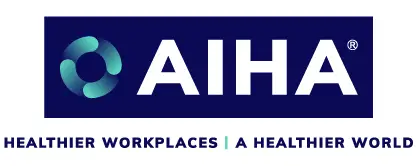
American Industrial Hygiene Association (AIHA)
AIHA is the association for scientists and professionals committed to preserving and ensuring occupational and environmental health and safety (OEHS) in the workplace and community. Founded in 1939, we support our members with our expertise, networks, comprehensive education programs, and other products and services that help them maintain the highest professional and competency standards. More than half of AIHA’s nearly 8,500 members are Certified Industrial Hygienists, and many hold other professional designations. AIHA serves as a resource for those employed across the public and private sectors and the communities in which they work.
Have a question about the event?
Connect with IBEC experts directly! Drop your queries below, and let's further the dialogue on preventing the spread of infectious diseases.

